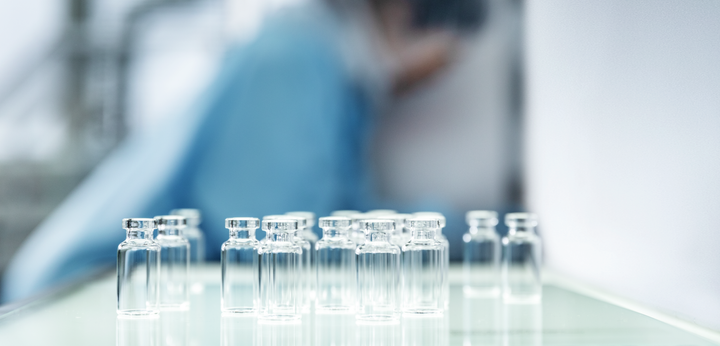
Rethinking pharmaceutical standards for glass: the need for dedicated testing strategies
The US Pharmacopeia (USP) has proposed a revision to General Chapter <660> Container—Glass, which provides specifications for glass containers used in the pharmaceutical industry. These modifications aim to modernize tests and test methods alongside specifications within the chapter. The underlying goal is to create additional flexibility for packaging and storage requirements. However, many experts in the pharmaceutical industry believe that this is a short-sighted move.
Pharmacopeias and the importance of quality standards
Pharmacopeias serve the crucial purpose of establishing minimum quality pharmaceutical standards to ensure that materials used for the primary packaging of pharmaceuticals comply with these standards. Testing glass containers for parenteral pharmaceutical products should address the material's properties, intended use, and easy handling to avoid misinterpreting testing results.
The historical development of USP tests
The historical development of USP United States Pharmacopeia tests, specifically designed and customized for testing Borosilicate and Sodalime Glass, has been optimized over decades. However, this does not automatically imply that they are suitable for testing other glass types. Type I Borosilicate glass is particularly suited for chemically demanding pharmaceutical products due to its well-known hydrolytic resistance performance. It minimizes the risk of negative interaction until the stored drug product's expiry date.The future of pharmaceutical products and container solutions
As the future of new pharmaceutical products includes complex organic compounds such as biologics, gene therapies, and mRNA-based vaccines, novel container solutions must be developed to ensure the active properties are maintained throughout the product's shelf life. This requires creativity and scientific understanding to adapt existing materials and develop new ones to contain liquid pharmaceutical products.
Challenges with broadening Type I classification
Simply broadening the acceptance of Type I classification of USP <660> (USP 660 Containers - Glass) by applying the given testing procedures to new container materials without understanding their strengths and weaknesses in combination with the pharmaceutical products in question is a short-sighted move. It is crucial to investigate critical interaction mechanisms with drug products based on leaching behaviour, such as the interaction of refining agents or leached alkaline species, particle nucleation growth, and API degradation at inner container surfaces.Harmonizing global pharmaceutical standards and expert-based approaches
Modifying the US pharmacopeia with less stringent requirements for new container materials contradicts the global approach of harmonizing drug product requirements in accordance with containment solutions for national/regional pharmacopeias. The expert-based approach of organizations like ICH, PDA, and ISO, which define comprehensive guidance in drug product applications and related topics, is ignored by the USP revision approach, offering only a quick fix for short-term political goals.
The impact on start-ups and think tanks
While established pharmaceutical companies may have the data to understand the risks and challenges of new container materials, start-ups and think tanks may overlook drug-container interaction over shelf life, potentially facing unexpected performance problems during the intended product shelf life.Recommendations for USP pharmaceutical standards reconsideration
It is strongly recommended that USP United States Pharmacopeia reconsiders its decision and adds new glass compositions as new types, including dedicated testing strategies, to ensure the quality and safety of pharmaceutical products and their containment solutions for the benefit of patients worldwide.Frequently asked questions
The US pharmacopeia (USP) is published annually by the United States Pharmacopeial Convention, which is a non-profit organization. Pharmacopeias serve the crucial purpose of establishing minimum quality standards to ensure that materials used for the primary packaging of pharmaceuticals comply with these standards. Testing glass containers for parental pharmaceutical products should address the material's properties, intended use, and easy handling to avoid misinterpreting testing results.

Prof. Dr. Volker Rupertus
Senior Principal Expert
Register for the latest news
Stay up to date with information about SCHOTT Pharma products and services by registering for our newsletter.